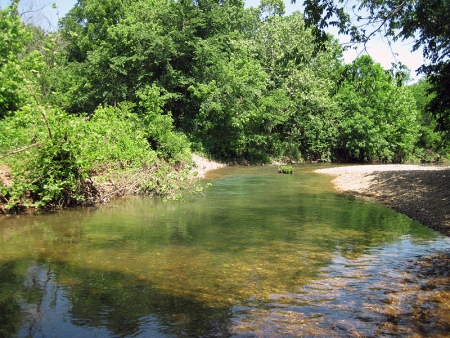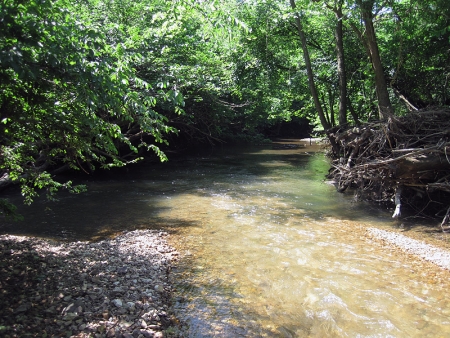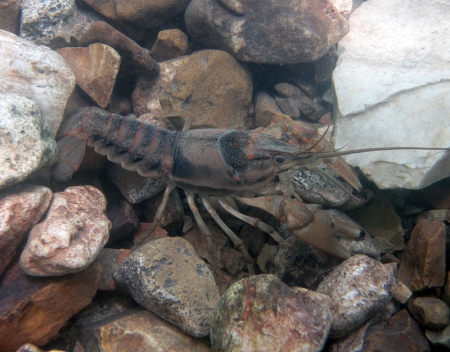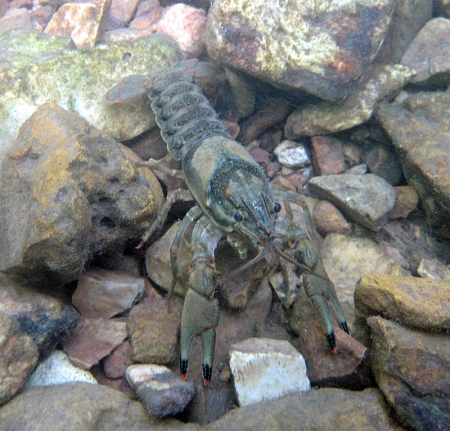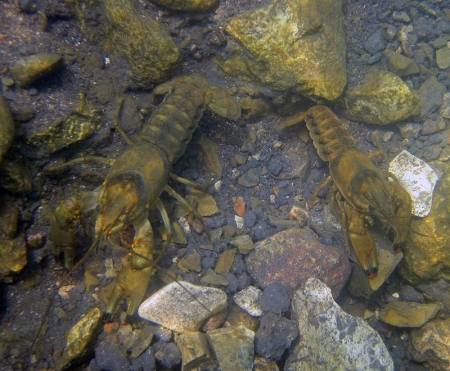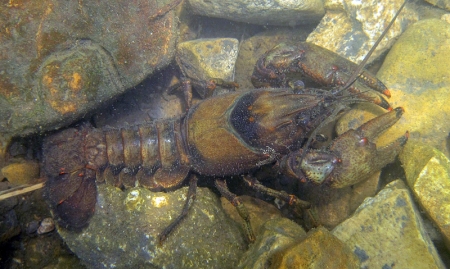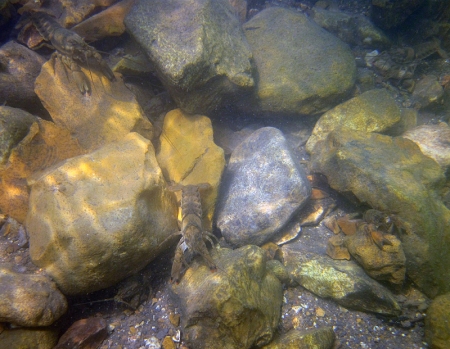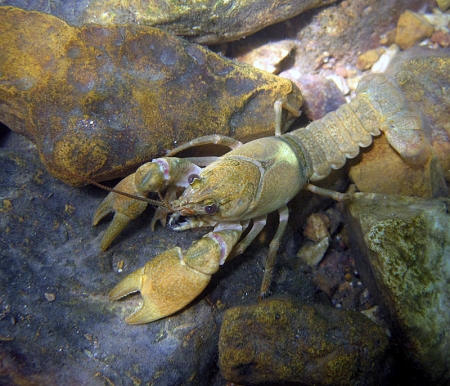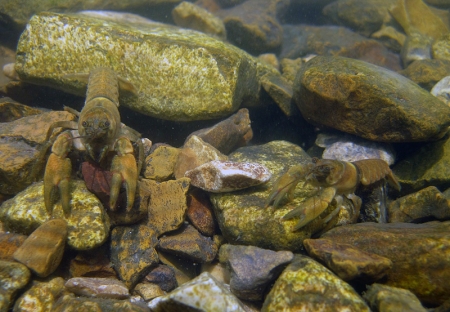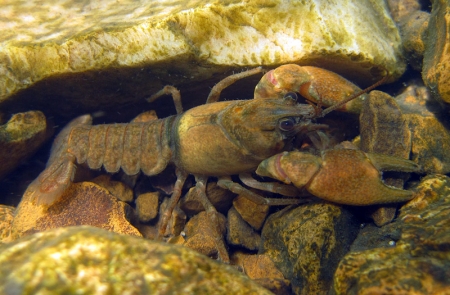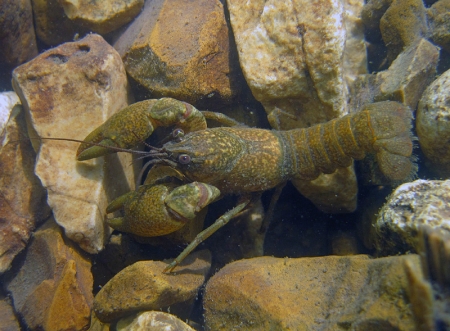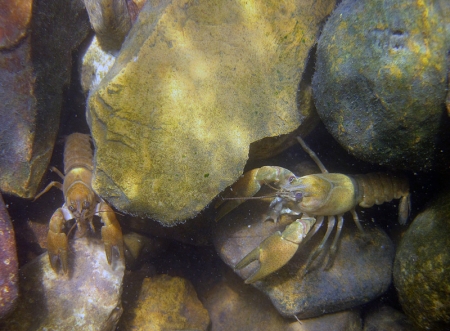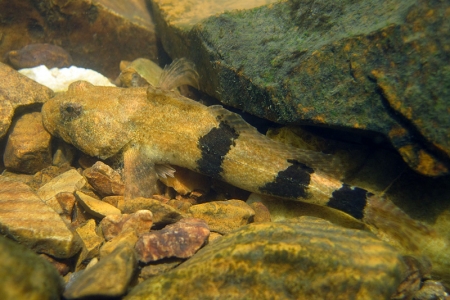The Robert E. Talbot Conservation Area sits on the headwaters of the Spring (Neosho) River, a few miles northwest of Mt. Vernon in Lawrence County. Two miles of Spring River lie within the CA and even though it’s nearly three hours away, it’s an easy drive because only the last few miles are two lane roads. Three species of crayfish could be expected in the river and that’s what brought Dayna and myself to the area. Actually, that’s what brought me to the area – it was stopping at the mall on the way home through Springfield that brought Dayna along. ![]()
The road parallels and crosses the river before you reach the CA and I could see that the Curse of the Muddy Water had struck again, even though there had been no rain for three weeks or so. I was guessing that someone had heavy equipment in the river and that was sort of confirmed by a local who told us “they’re pulling rootwads out of the river.” Bottom line was that the river was way too muddy for snorkeling, much less photography. But I knew from a previous trip that Stahl Creek, which joined the river within the CA, was easily accessed only a mile or so to the north. And since I didn’t believe the muddiness of the river was from the weather, there was hope that the creek would be clear.
We reached the parking lot at Stahl Creek – a staging area for horseback riders – and walked the short distance to the creek. It was clear. Or nearly so, still having that slightly milky look that so many of our streams had been showing after all the rain this spring. It was also very cold, a fact that chased me from the water sooner than I had planned.
Two of those three previously mentioned crayfish, Orconectes neglectus and O. macrus, were present in large numbers. The third species – O. virilis – put in an appearance only through a few small, wary juveniles that I was unable to catch or photograph. But those first two species more than made up for the lack of the third with one of the highest densities of crayfish I’ve seen so far. The joint was literally crawling with them.
This population of O. neglectus is considered to be the nominate subspecies, so it’s actually O. neglectus neglectus.
There were at least three age classes present, including this old warrior that was approaching 4” in length.
Did I mention that there were a lot of crayfish in this stream? Take a look at this photo and see how many crayfish you can find:
I see six, all O. n. neglectus, and I think I found them all.
O. macrus, the Neosho Midget Crayfish, was also abundant in the creek. O. macrus seldom exceeds two inches, making it one of Missouri’s smallest crayfish. As the common name suggests, O. macrus occurs only in the Neosho River basin of southwest Missouri and northwest Arkansas and possibly in adjacent areas of Kansas and Oklahoma.
I was so wrapped up with the crayfish, that I barely noticed the fish, something that disappoints me now, since the Spring River basin has some species I can’t find here at home. The only fish photo I ended up with was this Banded Sculpin:
Remember that I mentioned the water being cold? I wasn’t kidding. I had a couple of hours to spend and only managed to stay in the water for about 45 minutes before I froze out. But I had found and photographed the two primary species I had been looking for, so I was satisfied. I still hadn’t photographed an adult O. virilis but they’re likely to turn up anywhere and I knew it was just a matter of time, though it’s ironic that the most widespread crayfish in the state was proving to be one of the most difficult for me to find.
